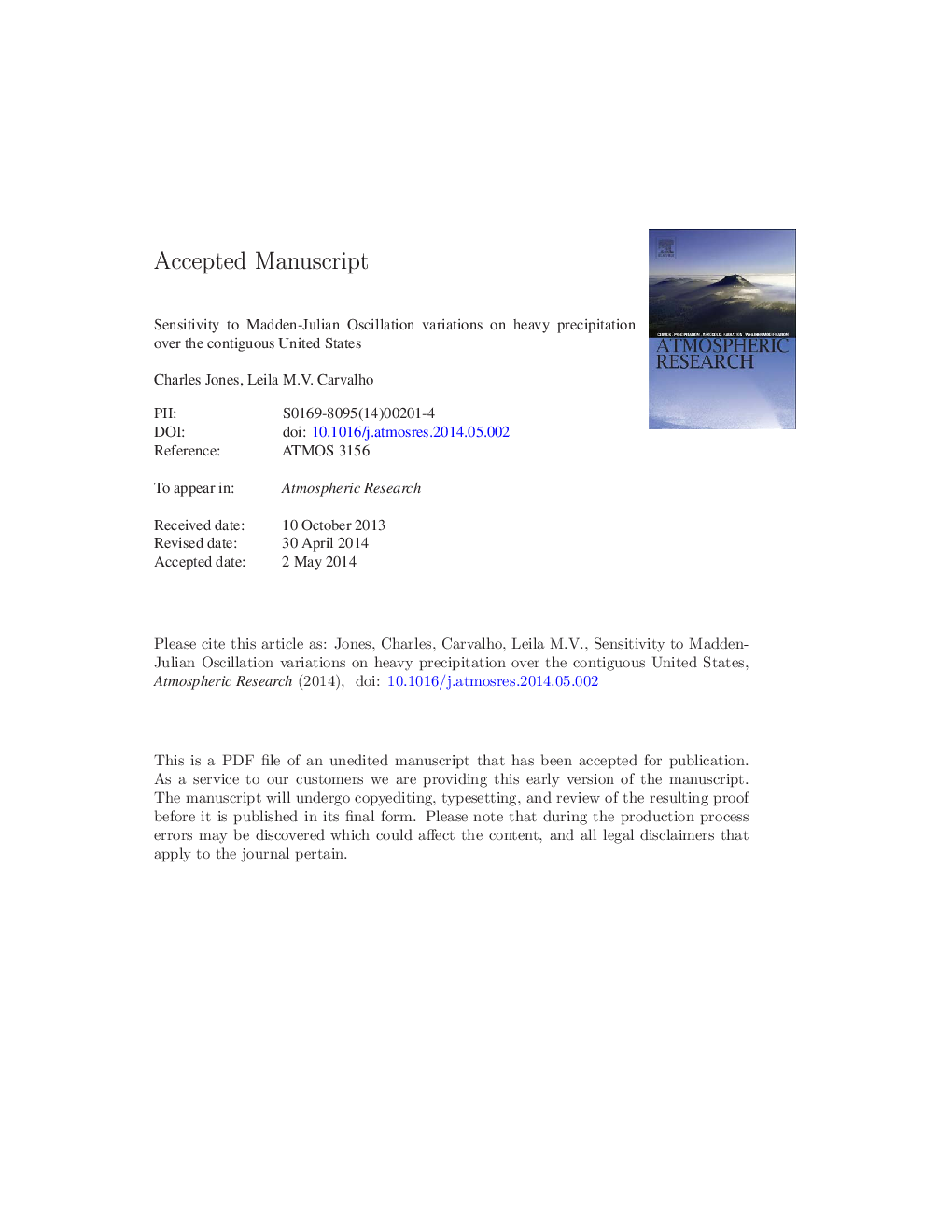| Article ID | Journal | Published Year | Pages | File Type |
|---|---|---|---|---|
| 6343538 | Atmospheric Research | 2014 | 61 Pages |
Abstract
The Madden-Julian Oscillation (MJO) is the most prominent mode of tropical intraseasonal variability in the climate system and has worldwide influences on the occurrences and forecasts of heavy precipitation. This paper investigates the sensitivity of precipitation over the contiguous United States (CONUS) in a case study (boreal 2004-05 winter). Several major storms affected the western and eastern CONUS producing substantial economic and social impacts including loss of lives. The Weather Research and Forecasting (WRF) model is used to perform experiments to test the significance of the MJO amplitude. The control simulation uses the MJO amplitude observed by reanalysis, whereas the amplitude is modified in perturbation experiments. WRF realistically simulates the precipitation variability over the CONUS, although large biases occur over the Western and Midwest United States. Daily precipitation is aggregated in western, central and eastern sectors and the frequency distribution is analyzed. Increases in MJO amplitude produce moderate increases in the median and interquartile range and large and robust increases in extreme (90th and 95th percentiles) precipitation. The MJO amplitude clearly affects the transport of moisture from the tropical Pacific and Gulf of Mexico into North America providing moist rich air masses and the dynamical forcing that contributes to heavy precipitation.
Related Topics
Physical Sciences and Engineering
Earth and Planetary Sciences
Atmospheric Science
Authors
Charles Jones, Leila M.V. Carvalho,
